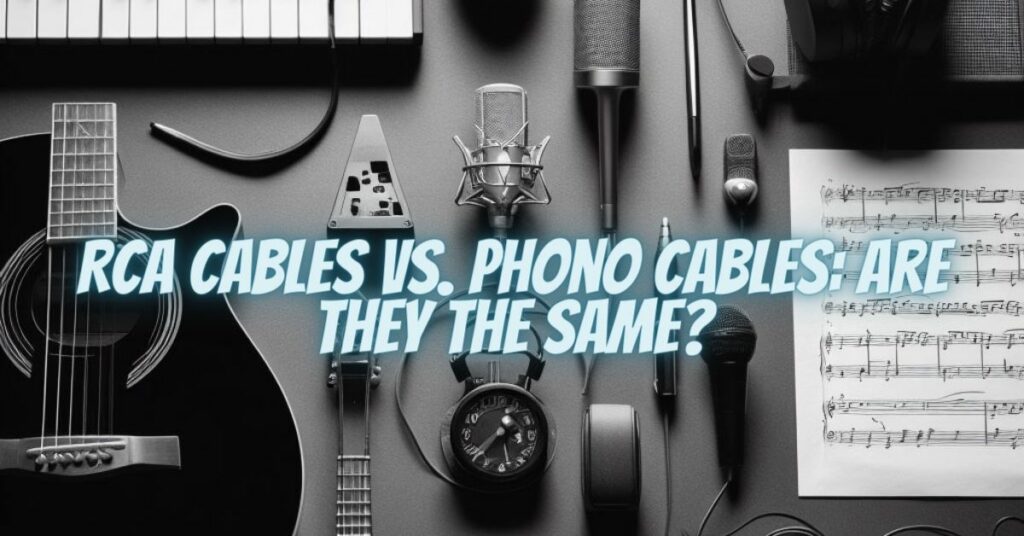In the world of audio and video connections, the terms RCA and phono cable are often used interchangeably, leading to some confusion. Are they the same thing, or is there a distinction between the two? In this comprehensive article, we’ll explore the terminology, technology, and history behind RCA and phono cables to clarify their differences and commonalities.
Understanding RCA Cables
- RCA Connectors: RCA, which stands for Radio Corporation of America, refers to the type of connectors used for audio and video connections. These connectors are typically round and feature a center pin surrounded by a metal shield. RCA connectors are known for their simplicity, durability, and ease of use.
- Audio and Video Applications: RCA cables are versatile and used in various audio and video applications. They are commonly used for connecting audio and video sources to receivers, amplifiers, speakers, TVs, and other audiovisual equipment.
- Color Coding: RCA connectors are color-coded to indicate their intended use. Red is often associated with the right audio channel, while white (or black) is used for the left audio channel. Yellow is typically used for composite video.
Understanding Phono Cables
- Phono Cables: A phono cable, also known as a turntable cable or an RCA phono cable, is a specific type of RCA cable designed for connecting turntables to amplifiers or receivers. These cables carry the audio signal produced by the turntable’s cartridge, which reads the grooves of vinyl records.
- Unique Characteristics: Phono cables differ from standard RCA cables in several ways. They are built to handle the unique characteristics of phono-level signals, which are notably weaker and have different equalization than standard line-level audio signals. Phono cables incorporate a ground wire to reduce interference and improve audio quality.
- RIAA Equalization: Phono cables also account for the RIAA equalization curve, which is used during the recording and playback of vinyl records. The cable applies a specific curve that corrects the audio signal to match the RIAA standard, ensuring proper tonal balance and sound quality.
The Distinction Between RCA and Phono Cables
While RCA and phono cables share some similarities, they are not the same:
- Application: RCA cables are used for a wide range of audio and video connections, while phono cables are specialized for connecting turntables to amplifiers or receivers. The key difference is in their intended use.
- Signal Type: Phono cables deal with phono-level signals generated by turntable cartridges, which are notably weaker than standard line-level audio signals. Standard RCA cables are designed for line-level signals and do not account for the unique characteristics of phono signals.
- Equalization: Phono cables incorporate RIAA equalization to correct the audio signal’s tonal balance, which is a critical element of vinyl playback. Standard RCA cables do not include this equalization.
- Ground Wire: Phono cables typically feature a dedicated ground wire to minimize interference and noise associated with turntable setups. Standard RCA cables may or may not include a ground wire, as it’s not a common requirement for most audio and video applications.
In conclusion, while both RCA and phono cables use RCA connectors, they serve different purposes and are not the same. RCA cables are versatile connectors used for various audio and video connections, whereas phono cables are specialized for turntable setups. Phono cables handle phono-level signals, include RIAA equalization, and often feature a ground wire to ensure high-quality vinyl playback. Understanding the distinction between these two terms is crucial when selecting the right cable for your audio or video needs, ensuring that you achieve the best possible sound and picture quality.


